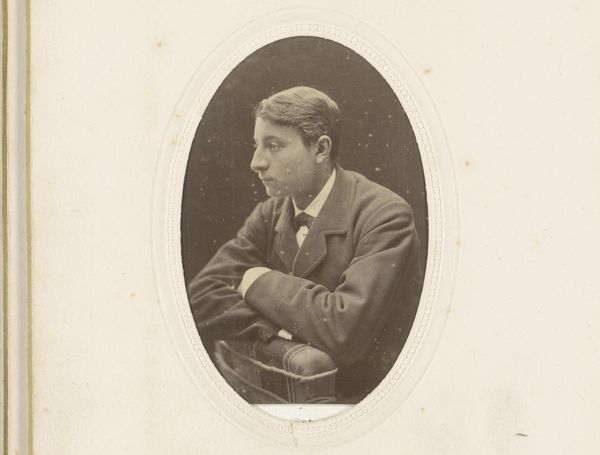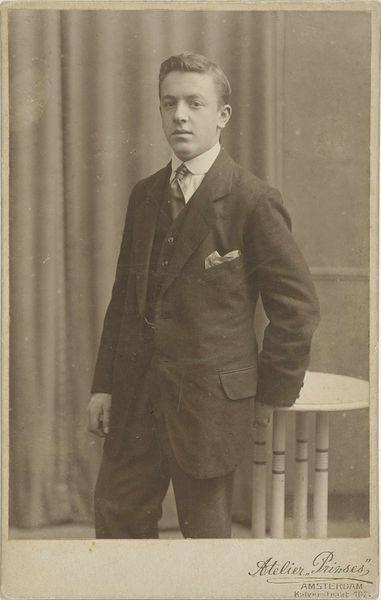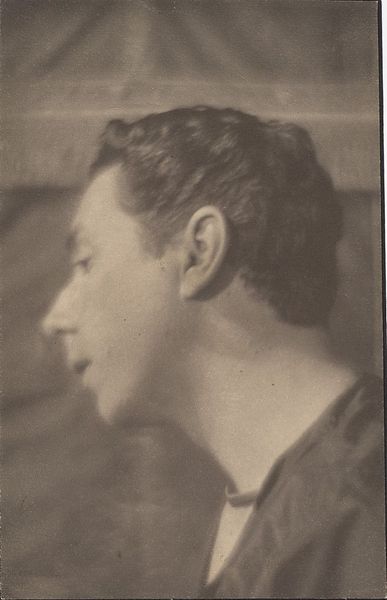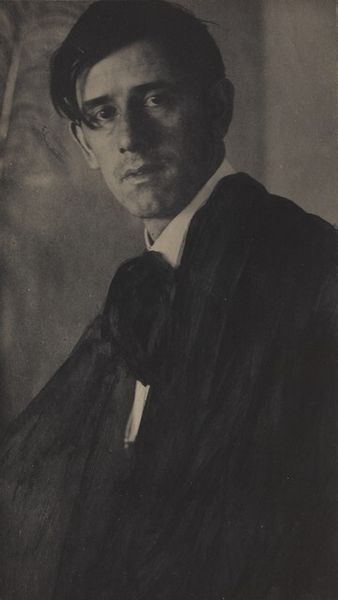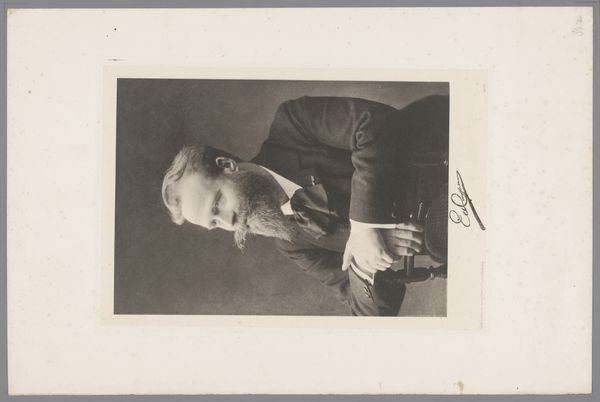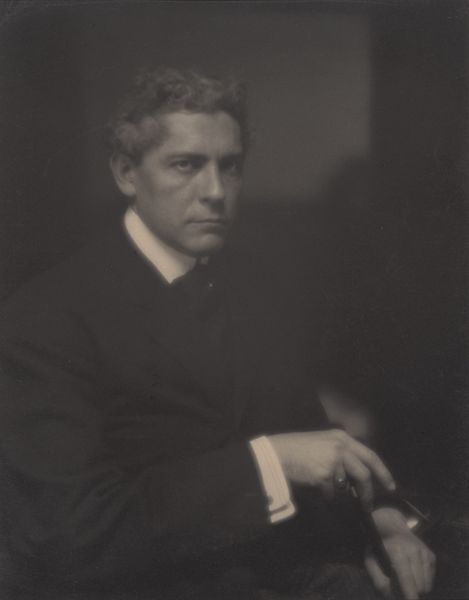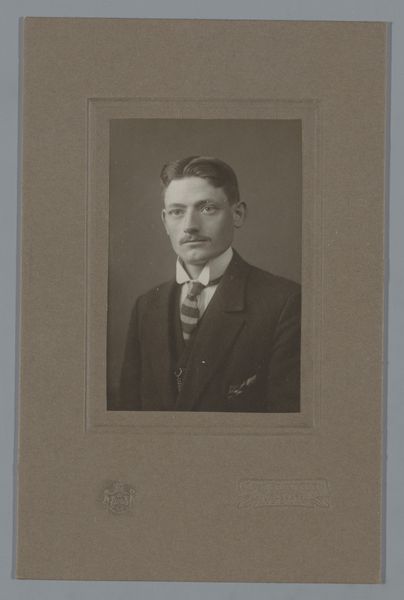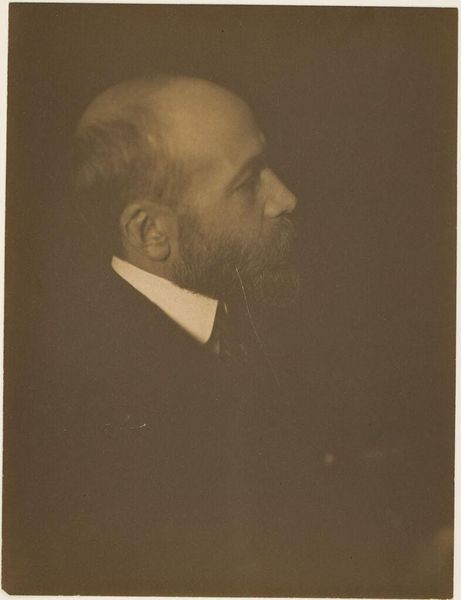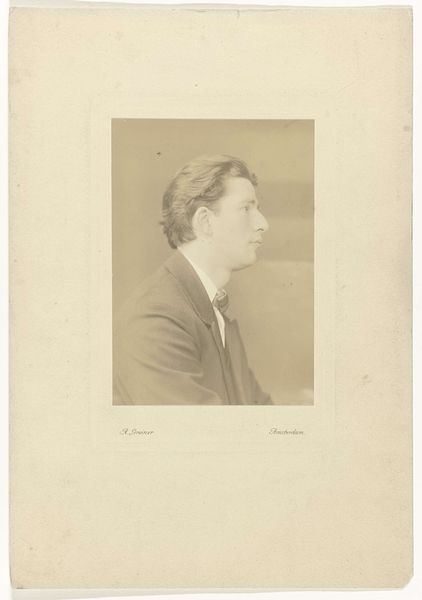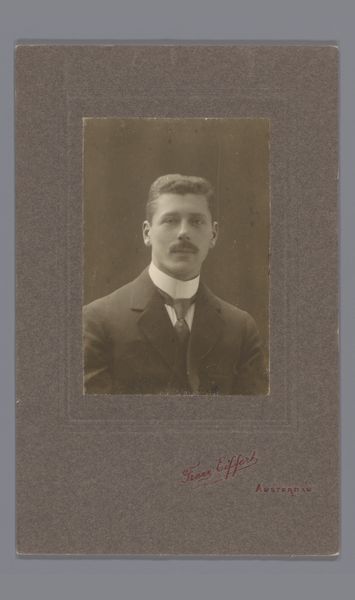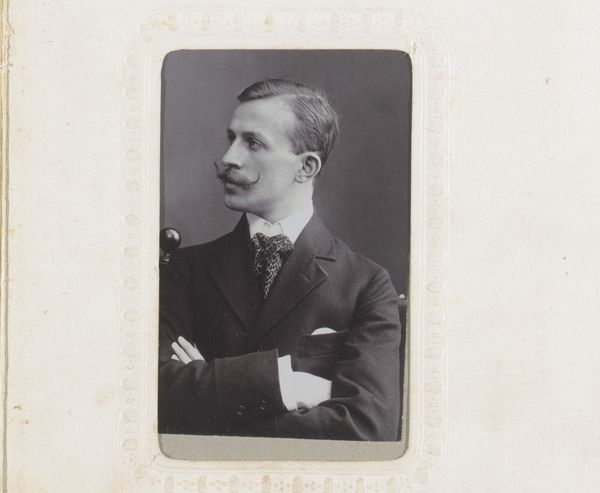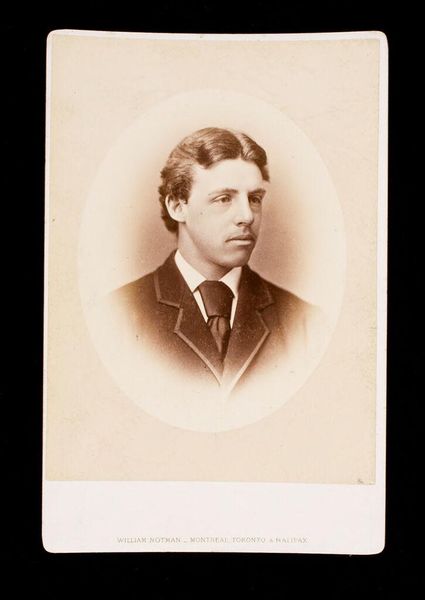
photography, gelatin-silver-print
#
portrait
#
pictorialism
#
photography
#
historical photography
#
gelatin-silver-print
Dimensions: sheet: 24.5 x 19.8 cm (9 5/8 x 7 13/16 in.) image: 24.2 x 19.4 cm (9 1/2 x 7 5/8 in.)
Copyright: National Gallery of Art: CC0 1.0
Curator: This is Alvin Langdon Coburn's portrait of Clarence H. White, a gelatin-silver print created around 1905. It exemplifies Pictorialism. What are your initial impressions? Editor: Melancholy. There's an undeniable sense of quiet longing in his gaze. The tonal range almost mutes him. What kind of statement might Coburn be making? Curator: Precisely. The restrained tonal palette and soft focus are deliberate. Pictorialism aimed to elevate photography to the status of fine art by emphasizing aesthetic effect over purely objective representation. Think of it as an anti-snapshot. Editor: That “elevation” always seems pointed, though. White, in his time, represented a very particular brand of male intellectual – highly cultured and participating in a mostly unspoken patriarchal order that photography itself was complicating. Curator: I understand the skepticism, but let’s consider how Coburn employs formal elements. The composition directs our gaze along the strong diagonal of White's face, his line of sight moving into the darkness of the background. This generates depth and tension, doesn’t it? Editor: Agreed. But the tension is also that the darkness nearly swallows him. It’s compelling because he is, visually and perhaps culturally, positioned to fade. That cylinder he holds seems important. Is it a diploma? Curator: Most likely. His career was flourishing then as both a photographer and a teacher. He helped found the Photo-Secession movement here. The object signifies his profession. It represents a key formal counterpoint, reflecting light and directing our focus back towards his face. Editor: Yes, a counterpoint within constraints. To return to that feeling of melancholy: I can’t shake the sensation that this photograph hints at unspoken burdens placed on artists navigating rapidly shifting social landscapes. Curator: Indeed. There is a depth to this that makes the piece linger in the mind. It prompts contemplation on the relationship between artistry, representation, and the society it mirrors. Editor: And I can see that there’s a real visual beauty—something that, as you say, distinguishes it from an ordinary portrait. Curator: An insightful point. And by focusing on his style and composition we might begin to discern this artistic expression beyond societal expectations.
Comments
No comments
Be the first to comment and join the conversation on the ultimate creative platform.
